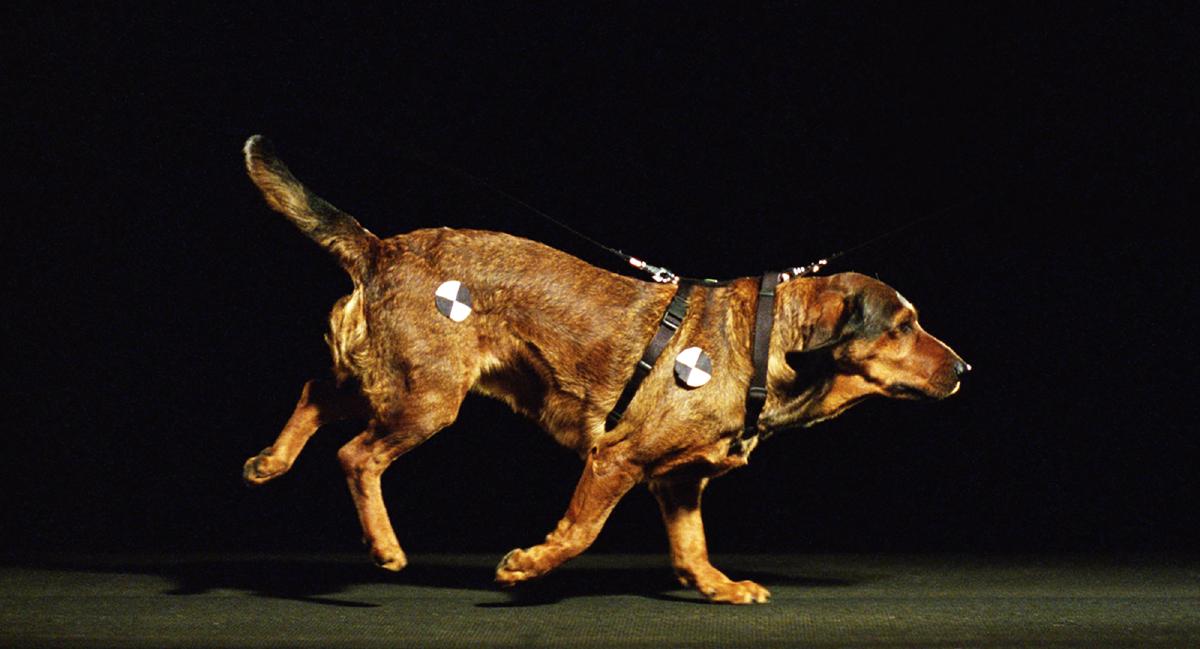RaumZeitHund
, 2020, 2010, 6min, 35mm, silentNikolaus Eckhard´s ironic study RaumZeitHund (SpaceTimeDog) is situated in the field of tension between chronophotography and cinematography. As legend goes, Eadweard Muybridge discovered chronophotography ca. 1870 as the result of a wager. He wanted to prove that a horse had all four legs in the air for a brief moment when in a gallop. In RaumZeitHund Nikolaus Eckhard refers directly to Muybridge´s famous photo series “Animal Locomotions.” A dog, specially trained for this purpose, is filmed on a treadmill in extreme slow motion (150 individual images per second). But in contrast to his role model, Eckhard does not use a slender, athletic greyhound, but rather, a less representative, long-eared brown Alpine Dachsbracke. The hunting dog, which is tethered to a black leather leash, is additionally furnished with black and white circular marks like a crash test dummy. The impression of “scientific-ness” is further heightened in that the color film is consistently screened entirely without sound. The dog´s movements, which are initially smooth, become increasingly distorted; the animal jerks and flounders ever more acutely. Muybridge was also mentor for the film´s complex montage. When presenting his movement studies, the photo pioneer grouped the individual images serially and in a grid pattern. Eckhard likewise arranges all shots in his film in a grid pattern (55 x 277 frames) and scans this matrix with the help of diverse mathematical functions. The dog´s appearance hence fluctuates “between violently controlled marionette and seemingly blithe ballerina” (Eckhard). In the end, likewise the film´s climax, the animal floats, in motion, with all four paws in the air. The evidence is there, the wonder is possible. (Norbert Paffenpichler)
Crew: Mark Gerstorfer, Anna Manhardt, Beate Bergolth, Severin Fiala, Johann Lurf, Thomas Rögelsperger, Valentin Fiala, Benedikt Eckhard, Max Limbeck
